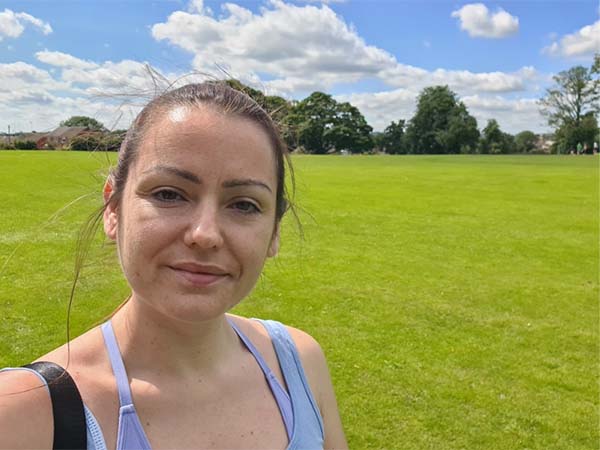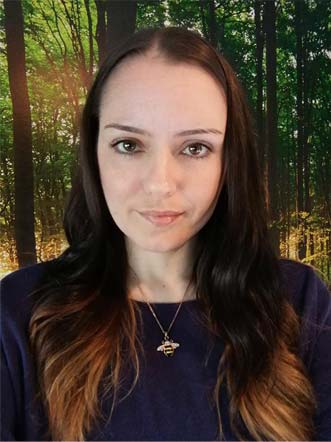Before I start, I feel I must make it clear that I am not qualified to give advice about exercise. We’re all different, and your care team will have much better knowledge of your personal circumstances.

I exercise every day now, but it feels like it happened organically. I am by no means athletic. I don’t go to a gym or a fitness class. I just do my own thing, which works for me, and I think that’s all any of us can aim for. A stoma shouldn’t stop you doing many things in life, although it can definitely require some adaptations on occasion.
Why do I want to exercise?
Exercise is not something I’ve really ever done “on purpose”. As a child, I had boundless energy. I’m told I had a lot more energy than the average child. I was always on the move. I couldn’t walk the streets without shimmying up a lamppost and hanging off it like a monkey. I was often taken swimming to try and tire me out – which I loved – and, as a teen, I still never sat still. I was always moving and dancing around.
As I’ve grown older, I’ve always walked everywhere because I never learnt to drive – I didn’t need to. Everything was within walking distance. It never occurred to me that I was continually exercising, any time I went anywhere, which was basically all the time.
I became unwell with Ulcerative Colitis very quickly. A hospital admission, two surgeries, and a slow recovery followed. Suddenly, nothing was within walking distance anymore. It took three months to recover fully and, even then, I felt like a lesser version of myself. Yes, I could walk everywhere I used to, but it took a lot more out of me. I’ve never experienced the same amount of energy I had prior to that first surgery in 2007.
Since then, fatigue has been a constant companion, and it took many years (and lots of flares and surgeries) for me to accept that. For a long time, I fought against it. I was stubborn, and I wasn’t willing to accept that any part of my life was going to be dictated to me by my disease. I think I feared the lack of control. I felt as though I’d had control of my life taken from me when I’d needed surgeries, so I was determined to keep a tight grip on the control I had; or that I thought I had.

I did briefly do Pilates because a class started around the corner from my house. I really enjoyed it, but then my flare worsened and I had to stop. By the time I was feeling OK again, the classes had ended. Anyway, in 2018, after seven surgeries, I felt like my health was the best it was going to get: despite dealing with chronic pain as a result. I decided it was time to take action in some areas of my life I’d been unhappy with.
The biggest change was leaving my job at a local marketing agency. I became self-employed as a patient advocate, which meant working from home. I started to gain weight, which is something that hadn’t been achievable in the previous 10+ years. It was great until it wasn’t. My stoma bags started leaking because the weight gain meant the crease my stoma sits in (from a previous stoma surgery) increased. It took me an embarrassingly long time to correlate the weight gain to the lack of exercise.
Not walking to and from work every day equaled 40 minutes walking less per day. I’d also often go to the supermarket because I was already out and about, but because I was working from home, I didn’t. I’d wait for my partner to drive us up there instead. My diet wasn’t great either, because I continued eating everything I used to eat in the past – when I was continually battling to keep my weight up. So for me, exercise wasn’t something I decided I wanted to do. I recognised that a lack of walking had contributed to my weight gain, therefore I needed to make a choice to add it back into my life and routine.
What do I get out of exercise?
In 2019, I started walking simply as a means to lose the weight. Because of the fibromyalgia (which was still undiagnosed at the time), it took me a while to get the balance right. In the beginning, I often did too much and then suffered for it, which made it impossible to keep it regular. Eventually, I settled into a routine of walking before work. Getting out into nature did wonders for me from a psychological perspective, which was totally unexpected.

The only barrier to daily walks was the fact I was constantly dealing with back sprains. I went to physio and was given some very basic exercises for my core. It turns out, me avoiding using my abdominal muscles, because of some discomfort and fear of getting a hernia, meant my back was taking a lot more strain than it should have been. Then COVID happened so my physio appointments were cancelled.
I started looking online to see if I could find any information about the exercises I should move onto. The NHS website led me to the Sport England website, where I found Yoga with Adriene. That’s when I started doing at-home Yoga. I’d been meaning to look into Yoga for a long time, just because I thought it may be similar to Pilates, which I’d enjoyed before.

All the exercises I’d been given by the physio were included, so I guessed I was on the right track in terms of building core strength. Again, I had to start very slowly and I always wore a hernia prevention belt, but I gradually built up. I noticed that the Yoga was also helping with my fibromyalgia.
Not only that, but my mental health, which had rapidly started declining during the first COVID lockdown began improving. I think focusing on my breath, having to remain present to practise properly, and simply carving some time out each day for myself was all a factor in that. I also started noticing my sleep improving. I later realised that being exposed to daylight every morning and exercising every day are both common sleep hygiene tips. Look at me go!
In 2021, I also introduced swimming twice a week. I love swimming, but the pool was often really cold. I started dreading going, so I eventually stopped because it wasn’t making me as happy as I’d hoped.
This year, I started going to a weekly outdoor Tai Chi and Qigong class. I dragged a friend along, and we’re by far the youngest there, but I thoroughly enjoyed it. I’m not sure I’ll enjoy it so much when the weather turns cold, and it moves indoors, but we’ll see!
We’re on a three-week break at the moment. Who knows what I’ll try next! I’m happy to try anything and see what sticks (and doesn’t cause too much pain). I’m considering trying the Couch to 5k, despite the fact I suspect it might be painful – I won’t know if I don’t try though, will I?
Let’s not forget that we do things, as I used to, all the time that count as exercise that we don’t even think about. Hoovering the house or mowing the lawn for example. Now, I’m a massive fan of gardening, and my body definitely recognises it’s getting a workout!
For me, the exercise I do has to be sustainable. Otherwise, what’s the point? Being a freelancer means I manage my own diary, and my diary is designed around my health. I get up three hours before work to fit in everything I need to do, including a walk and Yoga, before I sit down to start work at 10am. The Tai Chi class is 11am on a Wednesday. I imagine this discounts a lot of people that might want to try it, simply because they’re working, whereas I’m able to move my diary around to accommodate it.

Whatever you want to try, I’d urge you to do it. Of course, you need to think about your stoma and consider what additional support you might need but try not to let it stop you. Stoma bags don’t float off when you go swimming. You can get protective cups that cover the stoma for impact sports or things that require harnesses like climbing.
If you want to do something that seems unachievable right now, break it down into steps. Think about how you can build yourself up in strength, stamina, and confidence to get there, then focus on step one.
Fittleworth has a great resource in its Simple Steps programme. Simple Steps is a gentle form of Pilates based exercises designed to support you before and after your stoma surgery.
I’d love to hear what your go-to exercise is, or where you aspire to be! Pop a post in the Facebook support group!
We hope you enjoyed this article from our guest blogger. They are expressing their views or knowledge on a topic because of their experience and background. Some of the opinions expressed may not reflect the views of Fittleworth or your NHS professional.
It goes without saying, but this is not clinical advice. Each person will have an individual set of medical factors to consider. So please do not to make significant changes to your diet, exercise or treatments before consulting with an NHS professional.
Sahara was admitted to hospital and diagnosed with Ulcerative Colitis at the age of 19, after just two weeks of being incredibly unwell. One week later, she had emergency surgery to remove her colon and rectum, and had her first ileostomy. A turbulent journey followed; a multitude of treatments, complications, seven surgeries, a failed J-Pouch, and three ileostomies later, she is living with a permanent stoma and is a pro-active IBD and ostomy advocate.

Sahara joined the online IBD and ostomy community in 2014, and it very quickly became apparent to her that whilst awareness is important, even more important than that is providing support to others as they navigate the stormy waters of life with IBD, or an ostomy.
She runs #IBDSuperHeroes fundraising and awareness campaign, and the Facebook support group. She is a blogger for InflammatortyBowelDisease.net and an IBD Patient Consultant for merakoi – bridging the gap between patients and healthcare. She gets involved with research whenever she can, and is a volunteer for Cure Crohn’s Colitis, where she donates her time and expertise in social media marketing and content creation.
